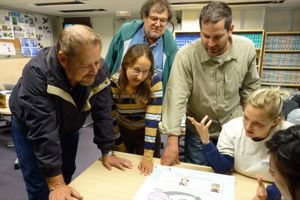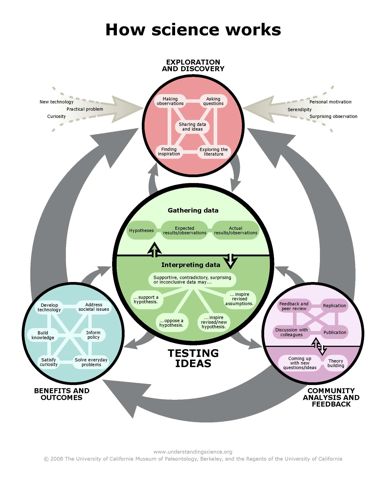 Participants of the School of Rock discuss the process of science
Participants of the School of Rock discuss the process of science
Get a group of science educators and scientists together, ask them the question "What is science?" and see what happens. Will everyone agree exactly on each term? Maybe not, but you'll see a shared passion for the subject. On our second day of the School of Rock, our "principal" posed that question to the group. What followed was an engaging and intelligent conversation.
We started by listing components of science, which was a fairly easy task. We agreed that science includes the following: observations, generating hypotheses, data collection, reasoning from multiple lines of evidence, revisions based on new data, seeking additional evidence, peer review, and collaboration and consensus. When put all together, science is a process, although not a linear one.
We then looked at a flow diagram entitled "How Science Works," published by the University of California Museum of Paleontology. It is an updated version of the outdated linear scientific method that most of us were taught in school. Absent from this newer diagram is the idea that the scientific process must start with a question, and that a question warrants a single hypothesis. Also gone is the notion that after doing an experiment and getting results, you have an answer to your question and the process is over. Instead, the diagram shows feedback between exploration, testing, analysis and outcomes…and this process does not stop.

